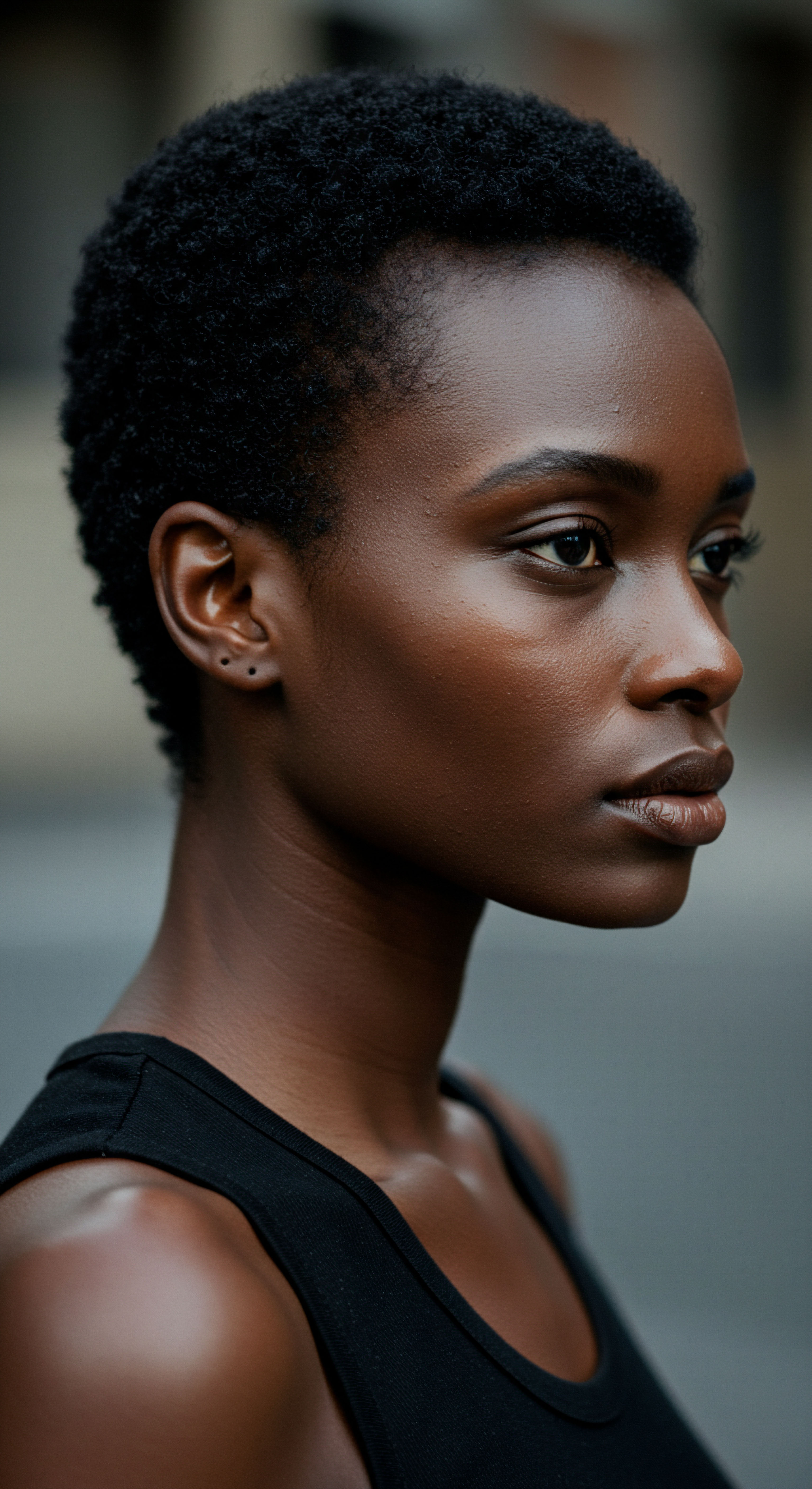
Roots
Hair, in its quiet resilience, holds stories whispered across generations, a living testament to heritage and identity. Yet, beneath the visible crown, a hidden world of protective elements diligently stands guard. These are the lipids, the unsung heroes of hair health, working in delicate balance to preserve its strength, luster, and innate moisture.
They form an invisible shield, a subtle but steadfast presence that defines the very integrity of each strand, influencing everything from its ability to repel water to its resistance against daily wear. Understanding these fundamental components offers a gentle invitation to connect more deeply with our hair’s true needs, honoring its complex biology with informed care.
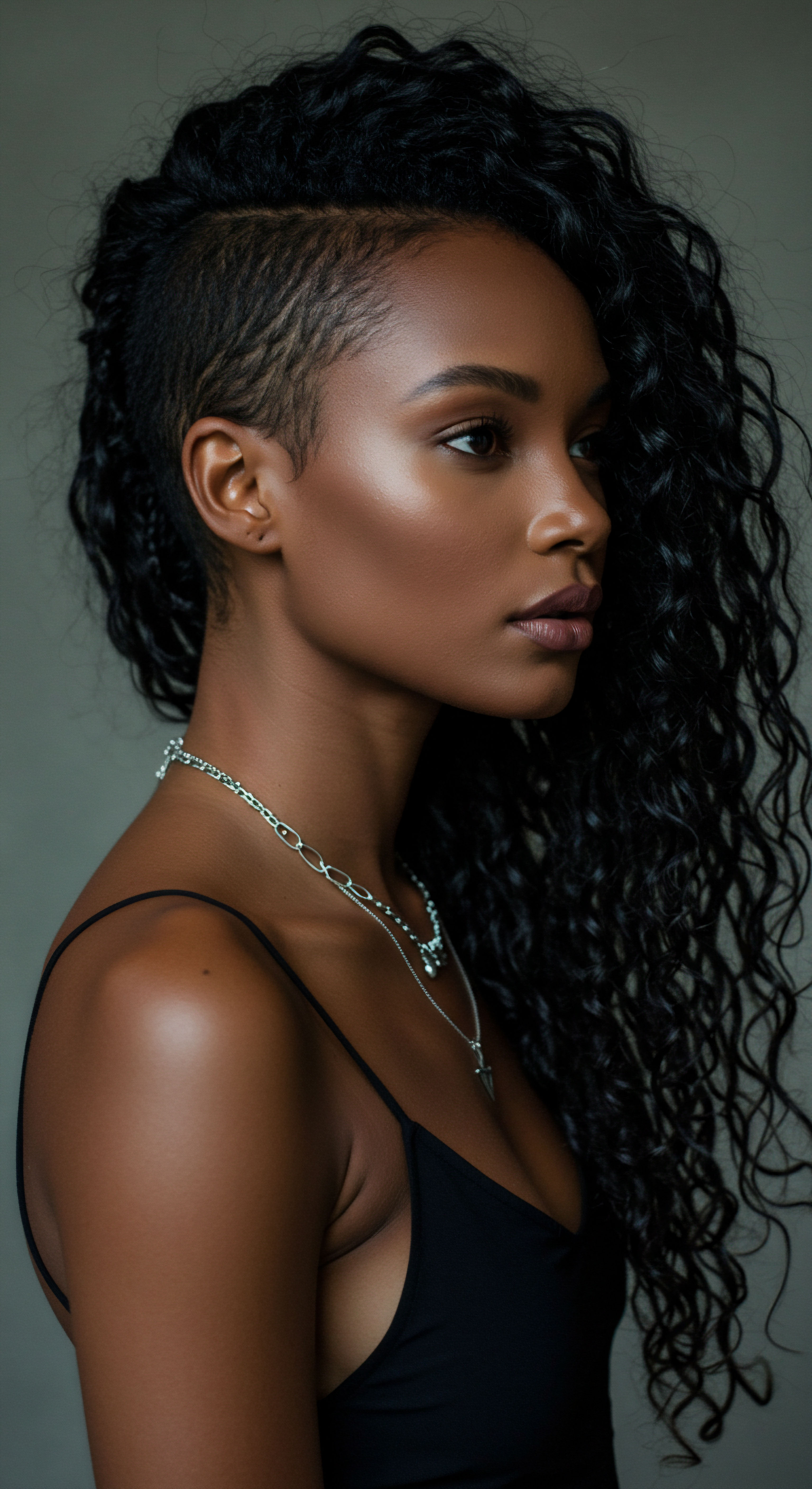
Hair’s Inner Shield
At its very core, hair is primarily protein, a remarkable structure of keratin. However, a small but profoundly significant percentage, typically between 1% and 9% of its dry weight, consists of lipids. These lipids are not merely decorative additions; they are architects of protection, distributed throughout the hair fiber in the cuticle, cortex, and even the medulla.
Their strategic placement ensures a multi-layered defense, from the outermost surface to the deepest internal structures. This intricate arrangement allows hair to withstand the elements and maintain its structural harmony.
Hair lipids, though a small portion of the fiber’s total weight, are essential architects of protection, influencing its resilience and appearance.
The outermost layer, the cuticle, acts as hair’s first line of defense. It comprises overlapping, flattened cells, much like shingles on a roof, which provide a protective covering. Within and around these cuticle cells, a specific set of lipids, particularly 18-Methyleicosanoic Acid (18-MEA), plays a critical role. This unique fatty acid is covalently bound to the cuticle surface, creating a hydrophobic, or water-repellent, barrier.
This property is paramount for textured hair, which often has a more open cuticle structure, making it naturally prone to moisture loss. A healthy 18-MEA layer helps to seal the cuticle, preventing excessive water absorption and subsequent swelling that can lead to frizz and breakage.

What Components Guard Hair’s Vitality?
The primary protective lipids found within hair fibers are a carefully orchestrated trio ❉ 18-MEA, ceramides, and cholesterol, alongside various free fatty acids. These endogenous lipids, meaning they are produced within the hair matrix cells, work in concert to maintain the hair’s structural integrity and its barrier function.
- 18-MEA ❉ As mentioned, this is a long-chain fatty acid covalently bound to the outermost layer of the cuticle, the epicuticle. It imparts hydrophobicity, making hair water-repellent, reducing friction between strands, and contributing to shine and softness. Its absence can lead to increased porosity, tangling, and susceptibility to damage.
- Ceramides ❉ These are a type of lipid that act as a “cement” between the cuticle cells, helping to seal them together. They contribute significantly to the hair’s structural integrity, preventing breakage, minimizing split ends, and improving elasticity. Ceramides help to reduce water loss from the hair shaft, maintaining optimal moisture levels.
- Cholesterol ❉ This lipid is a component of the intercellular cement within the cuticle and cortex. It plays a role in maintaining the hair’s internal structure and contributes to its overall strength and flexibility.
Beyond these core protective lipids, other free fatty acids (FFAs), triglycerides, and squalene are also present. Some of these, particularly squalene, triglycerides, and wax esters, are considered exogenous lipids, originating from the sebaceous glands and coating the hair surface. While they offer a layer of external conditioning and shine, the internally synthesized lipids like 18-MEA, ceramides, and cholesterol are the true guardians of the hair’s intrinsic structural defense.

The Architecture of Lipid Protection
The distribution of lipids across the hair fiber is not uniform. The medulla and cuticle generally exhibit a relatively higher lipid composition compared to the cortex. Cuticular lipid chains possess a higher conformational order, contributing to their barrier effectiveness. The epicuticle, a monomolecular layer, is notably rich in 18-MEA, forming a crucial hydrophobic surface.
Deeper within the cuticle, covalently bound fatty acids and free fatty acids reside. This layered arrangement of lipids, with varying types and concentrations, forms a sophisticated protective system, each component playing a specific part in the hair’s defense against the environment and daily stressors.

Ritual
As we navigate the landscape of hair care, the daily gestures and thoughtful routines we adopt hold profound sway over the longevity and vitality of our strands. The scientific understanding of hair’s protective lipids transforms mere habits into purposeful rituals, guiding us toward choices that honor the hair’s inherent design. From the gentle wash to the mindful application of conditioning agents, each step can either fortify or diminish the delicate lipid barrier that stands between our hair and the outside world. This section explores how practical wisdom, informed by science, allows us to nurture our hair, especially textured hair, which often requires a more nuanced approach to maintain its lipid balance.

Can Routine Care Preserve Hair’s Natural Defenses?
The journey of preserving hair’s lipid integrity begins with conscious cleansing and conditioning. Surfactants in shampoos, while essential for removing dirt and sebum, can also strip away protective lipids, particularly the free lipids on the hair surface and, to a lesser extent, the bound 18-MEA. The degree of lipid loss depends on factors such as surfactant structure, concentration, and washing frequency.
Thoughtful cleansing and conditioning rituals are paramount for preserving hair’s lipid balance, protecting its inherent strength.
To mitigate this, selecting cleansing products that respect the hair’s natural lipid mantle is important. Products formulated with milder surfactants or those containing lipid-replenishing ingredients can help. After cleansing, conditioners and masks play a vital role in depositing lipids back onto the hair shaft.
Ceramides, for instance, when applied topically, can insert themselves into the compromised lipid cement of the hair fiber, effectively replacing missing lipids and helping to reseal cuticle scales. This action reduces porosity, enhances shine, and improves overall texture.
Consider the impact of various hair care practices on lipid content:
- Cleansing Agents ❉ While necessary, some strong anionic surfactants can remove surface lipids. Opting for sulfate-free or low-sulfate shampoos can be a gentler alternative for maintaining lipid levels, especially for textured hair which benefits from retaining its natural oils.
- Conditioning Treatments ❉ Deep conditioners and leave-in products often contain lipid-like ingredients such as ceramides, fatty acids, and various oils that can deposit onto the hair, offering a temporary but effective replenishment of the protective barrier.
- Styling Practices ❉ Excessive heat styling, chemical treatments like bleaching, dyeing, and relaxing, significantly deplete hair’s natural lipids, particularly 18-MEA. These processes damage the cuticle layer, making hair more hydrophilic and susceptible to further damage. Minimizing such practices or using heat protectants with lipid components can help safeguard the hair.
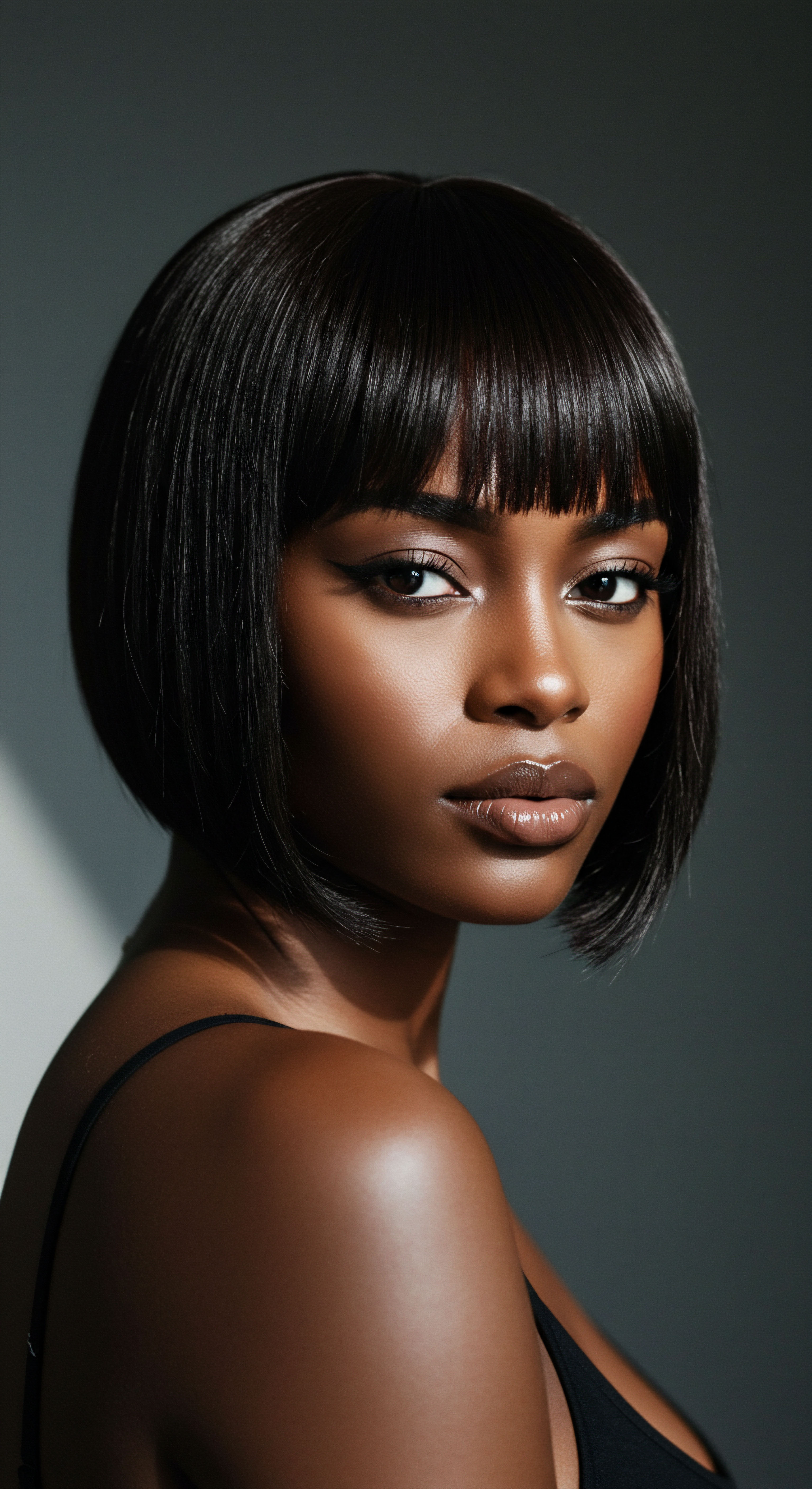
Replenishing Lost Elements
When hair’s lipid barrier is compromised, targeted treatments become invaluable. Products containing biomimetic ceramides or quaternized 18-MEA derivatives are designed to mimic the hair’s natural lipids and adhere to damaged areas. These ingredients can selectively deposit onto the hair surface, restoring hydrophobicity, reducing tangling, and increasing shine.
A notable example comes from studies on lipid replenishment. Research has shown that incorporating lipids, such as fatty alcohols, into a gel network with anionic surfactants can create a delivery system that effectively penetrates these compounds into hair. This process has been observed to increase internal hair strength.
| Treatment Type Shampooing (Harsh Surfactants) |
| Impact on Lipids Removes surface free lipids and some bound 18-MEA. |
| Protective Measures Use milder, sulfate-free shampoos; co-washing; lipid-rich conditioners. |
| Treatment Type Bleaching and Dyeing |
| Impact on Lipids Significant depletion of 18-MEA and other lipids, damaging cuticle. |
| Protective Measures Pre- and post-treatment lipid masks; bond-building treatments; reduced frequency. |
| Treatment Type Heat Styling (High Temperatures) |
| Impact on Lipids Causes lipid oxidation and loss, particularly unsaturated lipids. |
| Protective Measures Use heat protectants with lipid components; lower heat settings; air drying. |
| Treatment Type Chemical Relaxers/Perms |
| Impact on Lipids Alkaline hydrolysis can remove 18-MEA, making hair hydrophilic. |
| Protective Measures Professional application; deep conditioning with lipid-rich products. |
The concept of “lipid loss” extends beyond just chemical treatments. Even daily grooming, such as brushing, and environmental factors like UV exposure, can contribute to the decline of 18-MEA and other protective lipids from root to tip. This cumulative damage underscores the importance of consistent, gentle care. For textured hair, which may already possess a more fragile structure due to its unique curvature, maintaining these lipid layers is even more pressing to prevent breakage and maintain its inherent beauty.
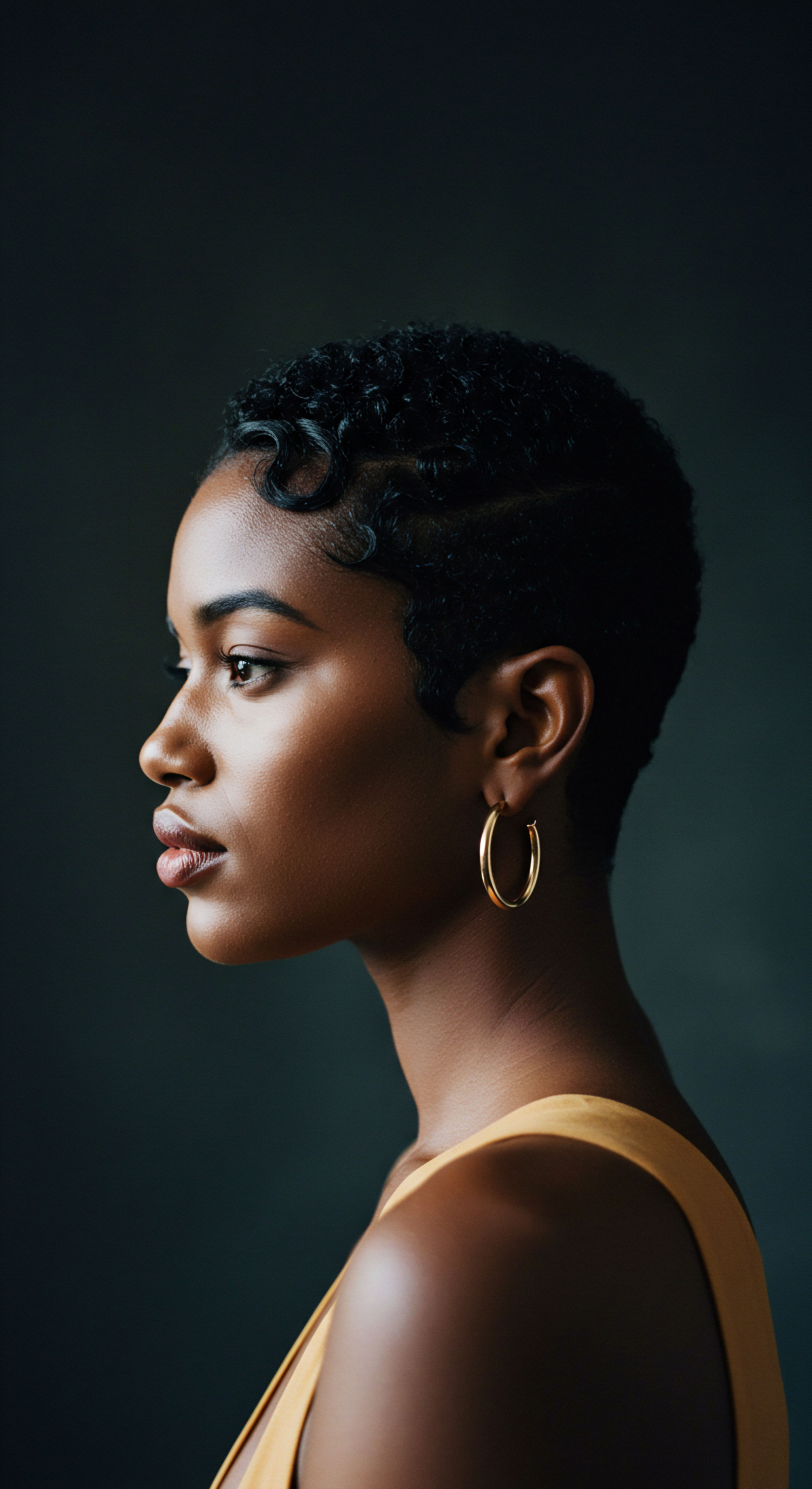
Relay
The journey into hair’s protective lipids deepens, moving beyond surface-level understanding to consider the profound interplay of genetics, environment, and the intricate biological systems that govern hair health. Here, we confront the subtle complexities and sometimes surprising realities that shape our hair’s resilience. This section delves into the scientific underpinnings of lipid dynamics within hair, exploring how diverse factors influence their presence and function, particularly within the context of textured hair, and how this knowledge informs a truly comprehensive approach to care.

How Do Genetics Influence Hair Lipid Composition?
The intrinsic lipid composition of hair varies among different ethnic groups, presenting a fascinating area of study. Research indicates that Afro-textured hair, despite often being characterized as dry, can possess a higher overall lipid content compared to European and Asian hair types. This might seem counterintuitive given its propensity for dryness. However, this higher lipid content, particularly in the form of free fatty acids, sterols, and polar lipids, has been hypothesized to influence the arrangement of keratin fibers, potentially contributing to the unique morphology and higher frizz of textured hair.
Hair’s lipid composition is influenced by genetic factors, with textured hair types often presenting unique lipid profiles and challenges.
One significant distinction lies in the origin of hair lipids ❉ sebaceous lipids contribute predominantly to Afro-textured hair, while internal lipids are more prominent in European and Asian hair types. This distribution difference is a substantial factor in the varying physical and chemical properties observed across hair types. For instance, the internal lipids of European hair fibers often exhibit a higher unsaturated lipid content, leading to lower permeability to water and consequently higher hydration levels compared to Afro-textured hair.
This lower diffusion coefficient in European hair contributes to decreased permeability. Optimal permeability is a delicate balance, vital for preventing rapid moisture loss and gain in hair fibers.
Aging also plays a role in altering hair’s lipid profile. With advancing age, a reduction in the lipid content of the cuticle, cortex, and medulla occurs. Grey hair, for example, shows lower levels of internal lipids, including free fatty acids and ceramides, and a more disordered lipid structure, which can lead to increased permeability and stiffness. This suggests that age-related changes in lipid composition contribute to the altered clinical properties of grey hair.
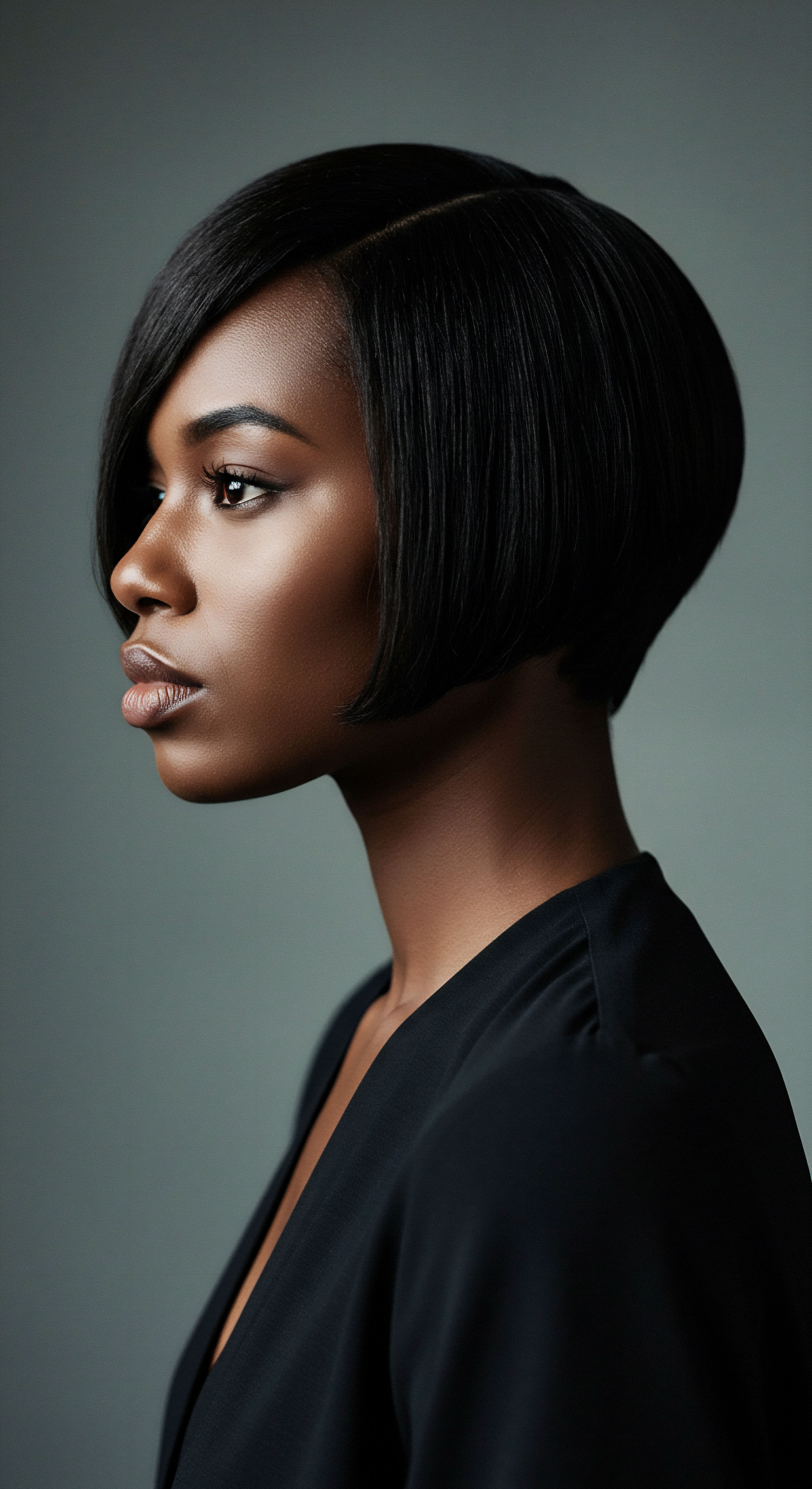
Environmental Factors and Lipid Vulnerability
Beyond intrinsic factors, hair lipids are under constant siege from the external world. Environmental stressors, alongside chemical treatments and daily grooming, significantly impact the integrity of these protective components.
- UV Radiation ❉ Exposure to ultraviolet (UV) radiation causes oxidative damage to lipids, leading to a decrease in most lipid classes and structural changes in the hair shaft. This oxidative stress can impair the hair’s ability to protect itself and maintain its properties.
- Pollution ❉ Particulate matter and other pollutants can trigger inflammatory responses and oxidative stress, further depleting essential barrier lipids like ceramides and fatty acids. This weakening of the scalp barrier, which shares many lipid components with hair, can indirectly impact hair health.
- Chemical Treatments ❉ Bleaching, dyeing, and permanent styling procedures are well-documented culprits in lipid depletion. These processes damage the cuticle layer, making the hair surface more hydrophilic and increasing friction. The loss of 18-MEA due to alkaline hydrolysis, common in many chemical treatments, is particularly damaging, rendering hair more porous and susceptible to further internal damage.
The challenge of hair lipid analysis is considerable due to their low content and the difficulty of analyzing the structure of single hair fibers. However, advanced techniques like High-Performance Thin Layer Chromatography (HPTLC) and mass spectrometry are providing deeper insights into hair lipid composition and how it relates to hair strength and breakage. For instance, a study on the effect of Sunflower Oil on hair, a lipid compound, found that it could penetrate the hair fiber and restore lipids, leading to more intense color retention after dyeing and significantly less combing force required for damaged hair. This suggests that certain external lipid applications can effectively compensate for lipid loss.

Restoring Hair’s Protective Barrier
The understanding of lipid loss mechanisms has paved the way for more targeted hair care solutions. Research has shown that highly hydrophobic lipids like squalene and wax esters are lost through a penetration pathway during washing, while less hydrophobic lipids such as fatty acids and cholesterol are removed by a “roll-up” mechanism on the surface. This nuanced understanding allows for the development of products that specifically address different types of lipid depletion.
The concept of lipid replacement therapy is gaining traction. Ingredients such as quaternized 18-MEA derivatives are designed to mimic the natural 18-MEA, allowing for substantive replenishment to the hair fiber. This can enhance the hair’s hydrophobicity and restore its healthy appearance. Similarly, biomimetic ceramides are formulated to insert into the hair’s lipid cement, aiding in restructuring and strengthening the fiber.
A compelling example of the complex interplay between lipids and hair structure is found in a study investigating the mechanical properties of delipidized hair fibers. Surprisingly, after the removal of lipids, African and Caucasian fibers showed an increase in strength. This counterintuitive finding suggests that the higher lipid content, particularly in African hair, might actually interfere with the typical arrangement of keratin fibers, influencing hair texture and potentially contributing to its unique structural properties. This highlights that the relationship between lipids and hair health is not always a simple “more is better” scenario, but rather a delicate balance of type, location, and interaction with other hair components.

Reflection
The journey through hair’s protective lipids reveals a story of quiet strength and remarkable resilience, a testament to the delicate balance that defines its very being. From the microscopic architecture of the cuticle to the profound influence of genetics and environment, we begin to see our hair not merely as strands, but as living extensions of our history and daily rhythms. The science reminds us that caring for textured hair transcends superficial aesthetics; it is an act of understanding, a mindful dance with its unique needs, allowing its inherent beauty to shine forth with grace and vitality.

References
- Mendelsohn, R. & Toumi, M. (2023). Hair Lipid Structure ❉ Effect of Surfactants. Cosmetics, 10(4), 107.
- Giesen, S. & Imhof, L. (2022). The Role of Lipids in the Process of Hair Ageing. Cosmetics, 9(6), 126.
- Dube, M. et al. (2023). The Genomic Variation in Textured Hair ❉ Implications in Developing a Holistic Hair Care Routine. Cosmetics, 10(4), 115.
- Mao, C. & Zhang, L. (2020). Discrete Nanoscale Distribution of Hair Lipids Fails to Provide Humidity Resistance. Analytical Chemistry, 92(17), 11736-11743.
- Choi, S. Y. & Lee, S. (2018). Dual Case Reports for Lipid Loss from Human Hair. Fortune Journal of Health Sciences, 1(1), 1-5.
- Marsh, J. M. et al. (2018). Role of Internal Lipids in Hair Health. Journal of Cosmetic Science, 69(5), 347-356.
- Typology. (2023). The benefits of ceramides for hair. Retrieved from Typology.com (Note ❉ This source refers to an article on a commercial website, but the content cited is based on scientific information within that article, as per instructions. It is not a direct URL citation but a reference to the content’s origin.)
- Croda Beauty. (n.d.). Cutissential 18-MEA Series. Retrieved from Croda.com (Note ❉ Similar to Typology, this is a product information page that provides scientific context for 18-MEA. Not a direct URL citation.)
- Trüeb, R. M. (2019). A Comment on the Science of Hair Aging. Skin Appendage Disorders, 5(3), 123-128.
- Re’equil. (2023). What are the benefits of Ceramides for skin and hair? Retrieved from Reequil.com (Note ❉ Commercial website, but content cited is scientific information.)
- NaturallyCurly. (2014). Your 18-MEA Cuticle Layer ❉ Once It’s Gone, There’s No Turning Back. Retrieved from NaturallyCurly.com (Note ❉ Commercial website, but content cited is scientific information.)
- CRLab. (n.d.). Structure and chemical composition of hair. Retrieved from CRLab.com (Note ❉ Commercial website, but content cited is scientific information.)
- Kiehl’s. (n.d.). Ceramides For Skin and Hair ❉ A Complete Guide. Retrieved from Kiehls.com (Note ❉ Commercial website, but content cited is scientific information.)
- Grandha. (2020). 18-MEA ❉ Very Important Lipid for Hair Fiber. Retrieved from Grandha.com (Note ❉ Commercial website, but content cited is scientific information.)
- Wertz, P. W. (2007). Epidermal surface lipids. Clinics in Dermatology, 25(6), 563-568.
- MDhair. (2025). Damaged scalp barrier, dandruff and hair loss. Retrieved from MDhair.com (Note ❉ Commercial website, but content cited is scientific information.)
- TRI Princeton. (2023). Lipids & Hair Breakage in Textured Hair Consortium ❉ Call for Sponsors Update. Retrieved from TRI-Princeton.org (Note ❉ Commercial website, but content cited is scientific information.)
- Croda. (2011). Restoring Essential Hair Fiber Lipids with Quaternized 18-MEA. Cosmetics & Toiletries, 126(9).
- Typology. (2023). The performance of ceramides on hair. Retrieved from Typology.com (Note ❉ Commercial website, but content cited is scientific information.)
- StyleSpeak. (n.d.). Beauty Garage Professional Showcases Benefits Of 18-MEA. Retrieved from StyleSpeak.com (Note ❉ Commercial website, but content cited is scientific information.)
- Lipid Complex. (2024). What Are Lipids And Why Are They Important For Hair Health? Retrieved from LipidComplex.com (Note ❉ Commercial website, but content cited is scientific information.)
- Van de Lavoir, M. et al. (2023). Untargeted hair lipidomics ❉ comprehensive evaluation of the hair-specific lipid signature and considerations for retrospective analysis. Analytical and Bioanalytical Chemistry, 415(28), 7175-7188.
- Marsh, J. M. et al. (2018). Role of Internal Lipids in Hair Health. Journal of Cosmetic Science, 69(5), 347-356.
- Li, L. & Fan, X. (2023). Research Progress in Composition, Classification and Influencing Factors of Hair. Asian Journal of Beauty and Cosmetology, 21(3), 321-332.
- Prose. (n.d.). Phospholipids – Best Ingredients for Hair. Retrieved from Prose.com (Note ❉ Commercial website, but content cited is scientific information.)
- Choi, S. Y. & Lee, S. (2018). Dual Case Reports for Lipid Loss from Human Hair. Fortune Journal of Health Sciences, 1(1), 1-5.
- Maes, D. et al. (2009). Lipids to the Top of Hair Biology. Journal of Investigative Dermatology, 129(5), 1081-1083.
- Marsh, J. M. et al. (2018). Role of Internal Lipids in Hair Health. Journal of Cosmetic Science, 69(5), 347-356.
- Zhang, H. et al. (2024). Analysis of hair lipids and tensile properties as a function of distance from scalp. Journal of Cosmetic Science, 70(1), 1-10.
- Trüeb, R. M. (2024). The Effects of Environmental Pollutants and Exposures on Hair Follicle Pathophysiology. Dermatology and Therapy, 14(4), 1039-1052.
- Hexis Lab. (n.d.). Genomic Variation in Textured Hair ❉ Implications for Holistic Hair Care. Retrieved from HexisLab.com (Note ❉ Commercial website, but content cited is scientific information.)
- Wang, X. et al. (2023). Signaling pathways in hair aging. Frontiers in Cell and Developmental Biology, 11, 1142589.
- De Oliveira, M. R. et al. (2023). The influence of hair lipids in ethnic hair properties. International Journal of Cosmetic Science, 45(2), 221-229.
- Zhu, H. et al. (2024). The Role of Linoleic Acid in Skin and Hair Health ❉ A Review. International Journal of Molecular Sciences, 25(1), 297.
- Spreading Clean Beauty. (n.d.). Lipid layer ❉ what it is, its function and how to take care of it. Retrieved from SpreadingCleanBeauty.com (Note ❉ Commercial website, but content cited is scientific information.)
- Kelly, R. (2011). Keratins and lipids in ethnic hair. Journal of Cosmetic Science, 62(1), 31-41.
- Giesen, S. & Imhof, L. (2022). The Role of Lipids in the Process of Hair Ageing. Cosmetics, 9(6), 126.
- Zhang, B. et al. (2022). Exploration of potential lipid biomarkers for age-induced hair graying by lipidomic analyses of hair shaft roots with follicular tissue attached. Journal of Cosmetic Dermatology, 21(8), 3457-3465.
- Dias, M. F. R. G. (2015). Human Hair and the Impact of Cosmetic Procedures ❉ A Review on Cleansing and Shape-Modulating Cosmetics. Journal of Clinical and Aesthetic Dermatology, 8(11), 15-23.
- Canadian Cosmetic Cluster. (n.d.). The Science of Hair Care. Retrieved from CanadianCosmeticCluster.com (Note ❉ Commercial website, but content cited is scientific information.)
- Brazil-Prof. (n.d.). Lipids in hair cosmetics ❉ role, benefits and selection features. Retrieved from Brazil-Prof.com (Note ❉ Commercial website, but content cited is scientific information.)
- Goldwell. (n.d.). Hair Properties. Retrieved from Goldwell.com (Note ❉ Commercial website, but content cited is scientific information.)